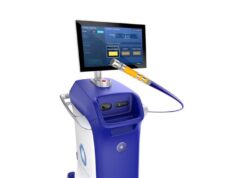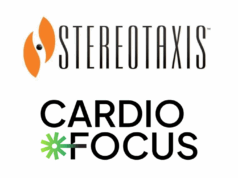 The UK’s National Institute for Health and Care Excellence (NICE) has today published new guidance recommending the use of pulsed field ablation (PFA) in the treatment of atrial fibrillation (AF), citing the fact the procedure “works well” and there are no serious concerns about its safety in this condition.
The UK’s National Institute for Health and Care Excellence (NICE) has today published new guidance recommending the use of pulsed field ablation (PFA) in the treatment of atrial fibrillation (AF), citing the fact the procedure “works well” and there are no serious concerns about its safety in this condition.
These evidence-based recommendations—which have also been endorsed by Healthcare Improvement Scotland—advocate PFA to treat AF “with standard arrangements in place for clinical governance, consent and audit”. NICE also advises clinicians to enter details about patients receiving the procedure onto the National Institute for Cardiovascular Outcomes Research (NICOR) database and review local clinical outcomes.
“Evidence shows the procedure reduces AF and its symptoms, increases quality of life in the short term, and raises no major safety concerns,” the NICE publication states. “More data collection would be useful to guide patient selection and to see how well the procedure works to prevent long-term complications of AF, such as stroke.”
To inform its recommendations, NICE performed a rapid review of published literature regarding the safety and efficacy of PFA for AF. Evidence derived from a total of 19 sources—including four systematic reviews and meta-analyses, two non-inferiority randomised controlled trials, five single-arm trials, an EU retrospective analysis of a prospective registry, and a UK nationwide registry—was discussed by the NICE committee.
Alongside professional experts, the committee deemed return to normal sinus rhythm, recurrence of arrhythmia, improved quality of life, reintervention rate, and long-term outcomes including reduction in stroke, to be among key efficacy outcomes with the procedure, while injury to oesophagus or phrenic nerve, pericardial tamponade, perforation, effusion and bleeding comprised the main safety outcomes taken into account.
In addition to its recommendation of PFA as a viable treatment option for AF, the NICE committee made the following comments:
- There are different types of catheters and generators with varying amounts of evidence; the evidence may not be transferable between technologies because of their differences
- People may have to continue taking anticoagulation medication after the procedure
- Results may be different for paroxysmal AF and persistent AF
- The procedure may need to be repeated
- The procedure is most commonly done under general anaesthesia in the UK (but deep sedation is often used in other countries)
- The procedure may be associated with less damage to adjacent structures and less post-procedure discomfort than other types of ablation
- The committee was told that PFA targets heart tissue more specifically than thermal ablation
Regarding the last of these points, NICE’s recommendations also note that—when lifestyle modifications or drug therapies are insufficient or unsuitable—catheter ablation procedures represent a standard treatment approach in symptomatic AF, with radiofrequency ablation and cryoballoon ablation being the most commonly used modalities within the UK healthcare system. However, the thermal energy utilised by these techniques carries a risk of damaging neighbouring tissues.
The recommendation document goes on to state that heart cells are “very sensitive” to electrical field energy and, as such, PFA may be able to target heart tissue more precisely than thermal alternatives—thus potentially reducing the risk of surrounding tissues like the oesophagus, nerves, and blood vessels, being damaged.
This new NICE recommendation has already been welcomed by Boston Scientific, with the company voicing its support via a press release dated 10 July. Boston’s Farapulse PFA system is a leading device in this space, and is said to be among the technologies evaluated for safety and efficacy by NICE ahead of its recommendation.
“The shorter procedure time of PFA can help reduce waiting lists while addressing the significantly higher stroke and heart failure risk associated with AF,” said Trudie Lobban, chief executive officer (CEO) and founder of Arrhythmia Alliance, as quoted in Boston’s press release. “It is a win-win situation for both patients and the NHS [National Health Service]—saving time, saving costs and, importantly, saving lives.”









